- Home
- Ken Follett
On Wings of Eagles
On Wings of Eagles Read online
Table of Contents
Title Page
Copyright Page
PREFACE
Epigraph
ONE
Two
Three
Four
Five
Six
Seven
Eight
Nine
Ten
Eleven
Twelve
Thirteen
Fourteen
EPILOGUE
APPENDIX
Acknowledgements
BIBLIOGRAPHY
ON WINGS OF EAGLES
The inspiring true story of one man's patriotic spirit--and his heroic mission to save his countrymen.
When two of his American employees were held hostage in a heavily guarded prison fortress in Iran, one man took matters into his own hands: American businessman H. Ross Perot. His team consisted of a group of volunteers from the executive ranks of his corporation, handpicked and trained by a retired Green Beret officer. To free the imprisoned Americans, they would face incalculable odds on a mission that only true heroes would have dared....
Only H. Ross Perot could make it happen.
Only Ken Follett could tell the tale.
"Superb.... Ken Follett's fans may be reluctant to see him return to fiction."
--The New York Times Book Review
"A marvelous, rare, terrific read ... as exciting as a novel."
--USA Today
"Ken Follett has combined the best of his journalistic skills and his flair for crackling fiction into a nonfiction work that's sure to be read.... This is one time when the mad dogs of the world were soundly defeated by the indomitable Yankee spirit and derring-do.... ON WINGS OF EAGLES SOARS."
--The Kansas City Star
"A FIRST-RATE BESTSELLER ... STIRRING, PROVOCATIVE, as meticulously detailed and as thrilling as Follett's fictional creations."
--The Houston Post
"EXCELLENT.... Fifteen American executives led by a feisty ex-army colonel on a hair-raising mission.... No Hollywood scriptwriter could match this adventure."
--The Cincinnati Enquirer
"RICH IN ATMOSPHERE, CHARACTER, AND DIALOGUE.... Follett is a pro's pro.... If this is not a major motion picture, somebody should kick Hollywood back to life."
--New York Daily News
"A REAL-LIFE THRILLER THAT LEAVES FICTION IN THE DUST."
--Arizona Daily Star
"ADVENTURE, SUSPENSE, AND DESPERATION ... AS EXCITING AND COMMANDING AS HIS NOVELS."
--The Nashville Banner
"A REMARKABLE ADVENTURE."
--Los Angeles Times
"FOLLETT AT HIS MOST SPELLBINDING."
--Boston Herald
"A GRIPPING THRILLER."
--Newsday
"AN EXTRAORDINARY STORY ... GRIPPING."
--The Associated Press
"A REMARKABLE TELLING OF A REAL-LIFE THRILLER.... Follett takes a hundred loose ends and false trails and weaves them into a book that flows like the best of well-made fantasies."
--Business Week
"IMPRESSIVE SUSPENSE AND EXCITEMENT."
--Publishers Weekly
ALSO BY KEN FOLLETT
THE MODIGLIANI SCANDAL
PAPER MONEY
EYE OF THE NEEDLE
TRIPLE
THE KEY TO REBECCA
THE MAN FROM ST. PETERSBURG
ON WINGS OF EAGLES
LIE DOWN WITH LIONS
THE PILLARS OF THE EARTH
NIGHT OVER WATER
A DANGEROUS FORTUNE
A PLACE CALLED FREEDOM
THE THIRD TWIN
THE HAMMER OF EDEN
CODE TO ZERO
JACKDAWS
SIGNET
Published by New American Library, a division of Penguin Group (USA) Inc., 375 Hudson Street, New York, New York 10014, USA Penguin Group (Canada), 90 Eglinton Avenue East, Suite 700, Toronto, Ontario M4P 2Y3, Canada (a division of Pearson Penguin Canada Inc.) Penguin Books Ltd., 80 Strand, London WC2R 0RL, England
Penguin Ireland, 25 St. Stephen's Green, Dublin 2, Ireland (a division of Penguin Books Ltd.) Penguin Group (Australia), 250 Camberwell Road, Camberwell, Victoria 3124, Australia (a division of Pearson Australia Group Pty. Ltd.) Penguin Books India Pvt. Ltd., 11 Community Centre, Panchsheel Park, New Delhi - 110 017, India Penguin Group (NZ), cnr Airborne and Rosedale Roads, Albany, Auckland 1310, New Zealand (a division of Pearson New Zealand Ltd.) Penguin Books (South Africa) (Pty.) Ltd., 24 Sturdee Avenue, Rosebank, Johannesburg 2196, South Africa
Penguin Books Ltd., Registered Offices: 80 Strand, London WC2R ORL, England
First Signet Printing, September
Copyright (c) Petancor BV, 1983
All rights reserved
Grateful acknowledgment is made for permission to use the following photographs: p. 1: top, Skeeter Hagler; Bottom, UPI; p. 2: top, Skeeter Hagler; center and bottom, UPI; p. 3: top and center: UPI; bottom, Skeeter Hagler; p. 5: bottom, UPI; pp. 6-7: Skeeter Hagler; p. 8: Carl Covington; p. 9, clockwise from top left: UPI; unidentified member of rescue team; UPI; UPI; pp. 10-13: photographs taken by unidentified members of rescue team; p. 14: Dale Walker; p. 15, clockwise from top left: Dale Walker; Dale Walker; unidentified member of rescue team; Dale Walker; p. 16: Dale Walker.
REGISTERED TRADEMARK-MARCA REGISTRADA
Without limiting the rights under copyright reserved above, no part of this publication may be reproduced, stored in or introduced into a retrieval system, or transmitted, in any form, or by any means (electronic, mechanical, photocopying, recording, or otherwise), without the prior written permission of both the copyright owner and the above publisher of this book.
PUBLISHER'S NOTE
The publisher does not have any control over and does not assume any responsibility for author or third-party Web sites or their content.
The scanning, uploading, and distribution of this book via the Internet or via any other means without the permission of the publisher is illegal and punishable by law. Please purchase only authorized electronic editions, and do not participate in or encourage electronic piracy of copyrighted materials. Your support of the author's rights is appreciated.
eISBN : 978-1-10117538-5
https://us.penguingroup.com
CAST OF CHARACTERS
DALLAS___________________________
Ross Perot, Chairman of the Board, Electronic Data Systems Corporation, Dallas, Texas
Merv Stauffer, Perot's right-hand man
T. J. Marquez, a vice-president of EDS
Tom Walter,chief financial officer of EDS
Mitch Hart, a former president of EDS who had good connections in the Democratic party
Tom Luce, founder of the Dallas law firm Hughes & Hill
Bill Gayden, president of EDS World, a subsidiary of EDS
Mort Meyerson, a vice-president of EDS
TEHRAN________________________
Paul Chiapparone, Country Manager, EDS Corporation Iran; Ruthie Chiapparone, his wife
Bill Gaylord, Paul's deputy; Emily Gaylord, Bill's wife
Lloyd Briggs, Paul's Number 3
Rich Gallagher, Paul's administrative assistant; Cathy Gallagher, Rich's wife; Buffy, Cathy's poodle
Paul Bucha, formerly Country Manager of EDS Corporation Iran, latterly based in Paris
Bob Young, Country Manager for EDS in Kuwait
John Howell, lawyer with Hughes & Hill
Keane Taylor, manager of the Bank Omran project
THE TEAM
Lt. Col. Arthur D. "Bull" Simons, in command
Jay Coburn, second-in-command
Ron Davis, point
Ralph Boulware, shotgun
Joe Poche, driver
Glenn
Jackson, driver
Pat Sculley, flank
Jim Schwebach, flank and explosives
THE IRANIANS
Abolhasan, Lloyd Briggs's deputy and the most senior Iranian employee
Majid, assistant to Jay Coburn; Fara, Majid's daughter
Gholam, personnel/purchasing officer under Jay Coburn
Hosain Dadgar, examining magistrate
AT THE U.S. EMBASSY
William Sullivan, Ambassador
Charles Naas, Minister Counselor, Sullivan's deputy
Lou Goelz, Consul General
Bob Sorenson, Embassy official
Ali Jordan, Iranian employed by the Embassy
Barry Rosen, press attache
ISTANBUL_______________________________
"Mr. Fish," resourceful travel agent
Ilsman, employee of MIT, the Turkish intelligence agency
"Charlie Brown," interpreter
WASHINGTON_____________________________
Zbigniew Brzezinski, National Security Advisor
Cyrus Vance, Secretary of State
David Newsom, Undersecretary at the State Department
Henry Precht, head of the Iran Desk at the State Department
Mark Ginsberg, White House--State Department liaison
Admiral Tom Moorer, former Chairman of the Joint Chiefs of Staff
PREFACE
This is a true story about a group of people who, accused of crimes they did not commit, decided to make their own justice.
When the adventure was over there was a court case, and they were cleared of all charges. The case is not part of my story, but because it established their innocence I have included details of the court's Findings and Judgment as an appendix to this book.
In telling the story I have taken two small liberties with the truth.
Several people are referred to by pseudonyms or nicknames, usually to protect them from the revenge of the government of Iran. The false names are: Majid, Fara, Abolhasan, Mr. Fish, Deep Throat, Rashid, the Cycle Man, Mehdi, Malek, Gholam, Seyyed, and Charlie Brown. All other names are real.
Secondly, in recalling conversations that took place three or four years ago, people rarely remember the exact words used; furthermore, real-life conversation, with its gestures and interruptions and unfinished sentences, often makes no sense when it is written down. So the dialogue in this book is both reconstructed and edited. However, every reconstructed conversation has been shown to at least one of the participants for correction or approval.
With those two qualifications, I believe every word of what follows is true. This is not a "fictionalization" or a "nonfiction novel." I have not invented anything. What you are about to read is what really happened.
I bare you on eagles' wings, and brought you unto myself.
--EXODUS 19:4
ONE
1______
It all started on December 5, 1978.
Jay Coburn, Director of Personnel for EDS Corporation Iran, sat in his office in uptown Tehran with a lot on his mind.
The office was in a three-story concrete building known as Bucharest (because it was in an alley off Bucharest Street). Coburn was on the second floor, in a room large by American standards. It had a parquet floor, a smart wood executive desk, and a picture of the Shah on the wall. He sat with his back to the window. Through the glass door he could see into the open-plan office where his staff sat at typewriters and telephones. The glass door had curtains, but Coburn never closed them.
It was cold. It was always cold: thousands of Iranians were on strike, the city's power supply was intermittent, and the heating was off for several hours most days.
Coburn was a tall, broad-shouldered man, five feet eleven inches and two hundred pounds. His red-brown hair was cut businessman-short and carefully combed, with a part. Although he was only thirty-two, he looked nearer to forty. On closer examination his youth showed in his attractive, open face and ready smile; but he had an air of early maturity, the look of a man who grew up too fast.
All his life he had shouldered responsibility: as a boy, working in his father's flower shop; at the age of twenty, as a helicopter pilot in Vietnam; as a young husband and father; and now, as Personnel Director, holding in his hands the safety of 131 American employees and their 220 dependents in a city where mob violence ruled the streets.
Today, like every day, he was making phone calls around Tehran trying to find out where the fighting was, where it would break out next, and what the prospects were for the next few days.
He called the U.S. Embassy at least once a day. The Embassy had an information room that was manned twenty-four hours a day. Americans would call in from different areas of the city to report demonstrations and riots, and the Embassy would spread the news that this district or that was to be avoided. But for advance information and advice Coburn found the Embassy close to useless. At weekly briefings, which he attended faithfully, he would always be told that Americans should stay indoors as much as possible and keep away from crowds at all costs, but that the Shah was in control and evacuation was not recommended at this time. Coburn understood their problem--if the U.S. Embassy said the Shah was tottering, the Shah would surely fall--but they were so cautious they hardly gave out any information at all. Disenchanted with the Embassy, the American business community in Tehran had set up its own information network. The biggest U.S. corporation in town was Bell Helicopter, whose Iran operation was run by a retired major general, Robert N. Mackinnon. Mackinnon had a first-class intelligence service and he shared everything. Coburn also knew a couple of intelligence officers in the U.S. military and he called them.
Today the city was relatively quiet: There were no major demonstrations. The last outbreak of serious trouble had been three days earlier, on December 2, the first day of the general strike, when seven hundred people had been reported killed in street fighting. According to Coburn's sources the lull could be expected to continue until December 10, the Muslim holy day of Ashura.
Coburn was worried about Ashura. The Muslim winter holiday was not a bit like Christmas. A day of fasting and mourning for the death of the Prophet's grandson Husayn, its keynote was remorse. There would be massive street processions, during which the more devout believers would flog themselves. In that atmosphere hysteria and violence could erupt fast.
This year, Coburn feared, the violence might be directed against Americans.
A series of nasty incidents had convinced him that anti-American feeling was growing rapidly. A card had been pushed through his door saying: "If you value your life and possessions, get out of Iran." Friends of his had received similar postcards. Spray-can artists had painted "Americans live here" on the wall of his house. The bus that took his children to the Tehran American School had been rocked by a crowd of demonstrators. Other EDS employees had been yelled at in the streets and had their cars damaged. One scary afternoon Iranians at the Ministry of Health and Social Welfare--EDS's biggest customer--had gone on the rampage, smashing windows and burning pictures of the Shah, while EDS executives in the building barricaded themselves inside an office until the mob went away.
In some ways the most sinister development was the change in the attitude of Coburn's landlord.
Like most Americans in Tehran, Coburn rented half of a two-family home: he and his wife and children lived upstairs, and the landlord's family lived on the ground floor. When the Coburns had arrived, in March of that year, the landlord had taken them under his wing. The two families had become friendly. Coburn and the landlord discussed religion: the landlord gave him an English translation of the Koran, and the landlord's daughter would read to her father out of Coburn's Bible. They all went on weekend trips to the countryside together. Scott, Coburn's seven-year-old son, played soccer in the street with the landlord's boys. One weekend the Coburns had the rare privilege of attending a Muslim wedding. It had been fascinating. Men and women had been segregated all day, so Coburn and Scott went with the men, Coburn's wife Liz
and their three daughters went with the women, and Coburn never got to see the bride at all.
After the summer, things had gradually changed. The weekend trips stopped. The landlord's sons were forbidden to play with Scott in the street. Eventually all contact between the two families ceased even within the confines of the house and its courtyard, and the children would be reprimanded for just speaking to Coburn's family.
The landlord had not suddenly started hating Americans. One evening he had proved that he still cared for the Coburns. There had been a shooting incident in the street: one of his sons had been out after curfew, and soldiers had fired at the boy as he ran home and scrambled over the courtyard wall. Coburn and Liz had watched the whole thing from their upstairs verandah, and Liz had been scared. The landlord had come up to tell them what had happened and to reassure them that all was well. But he clearly felt that for the safety of his family he could not be seen to be friendly with Americans: he knew which way the wind was blowing. For Coburn it was yet another bad sign.
Now, Coburn heard on the grapevine, there was wild talk in the mosques and bazaars of a holy war against Americans beginning on Ashura. It was five days away, yet the Americans in Tehran were surprisingly calm.
Coburn remembered when the curfew had been introduced: it had not even interfered with the monthly EDS poker game. He and his fellow gamblers had simply brought their wives and children, turned it into a slumber party, and stayed until morning. They had got used to the sound of gunfire. Most of the heavy fighting was in the older, southern sector where the bazaar was, and in the area around the University; but everyone heard shots from time to time. After the first few occasions they had became curiously indifferent to it. Whoever was speaking would pause, then continue when the shooting stopped, just as he might in the States when a jet aircraft passed overhead. It was as if they could not imagine that shots might be aimed at them.

 The Pillars of the Earth
The Pillars of the Earth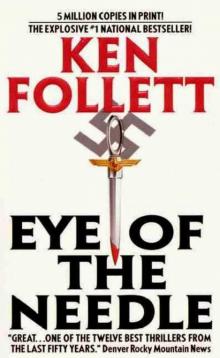 Eye Of The Needle
Eye Of The Needle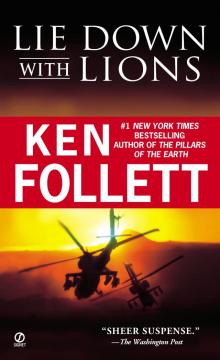 Lie Down With Lions
Lie Down With Lions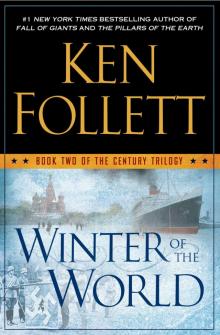 Winter of the World
Winter of the World Triple
Triple World Without End
World Without End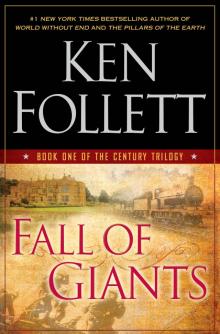 Fall of Giants
Fall of Giants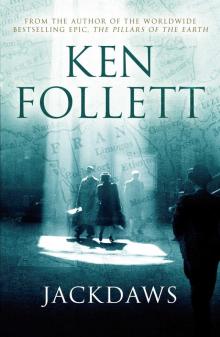 Jackdaws
Jackdaws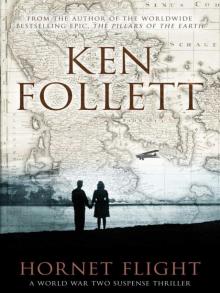 Hornet Flight
Hornet Flight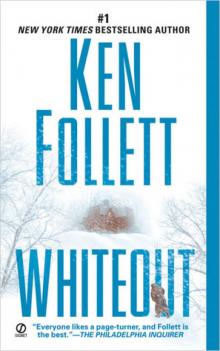 Whiteout
Whiteout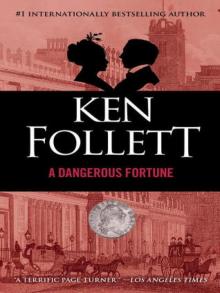 A Dangerous Fortune
A Dangerous Fortune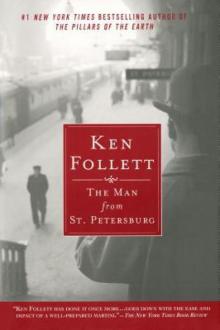 The Man From St. Petersburg
The Man From St. Petersburg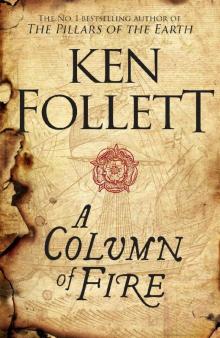 A Column of Fire
A Column of Fire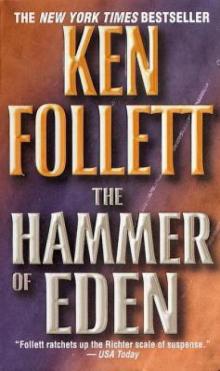 The Hammer of Eden
The Hammer of Eden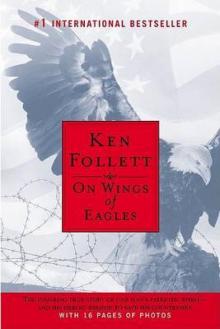 On Wings of Eagles
On Wings of Eagles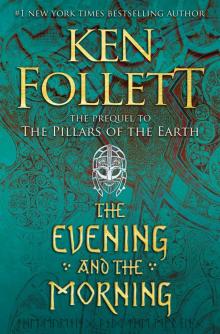 The Evening and the Morning
The Evening and the Morning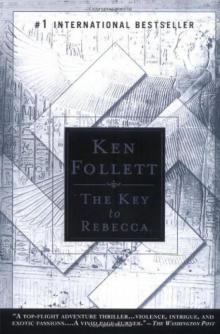 The Key to Rebecca
The Key to Rebecca Code to Zero
Code to Zero Paper Money
Paper Money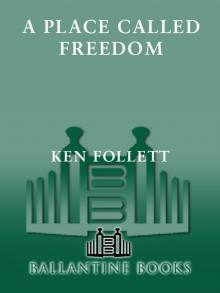 A Place Called Freedom
A Place Called Freedom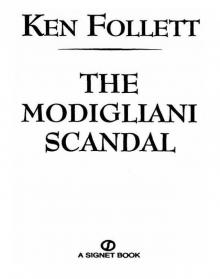 The Modigliani Scandal
The Modigliani Scandal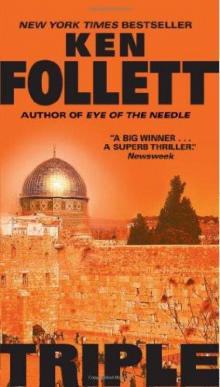 Triple (1991)
Triple (1991)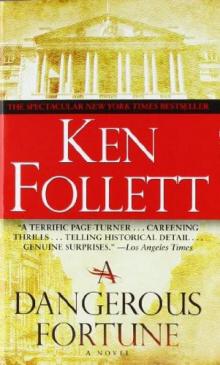 A Dangerous Fortune (1994)
A Dangerous Fortune (1994)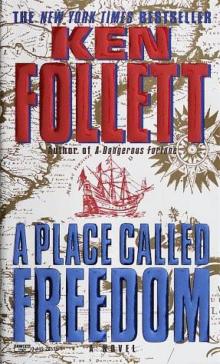 A Place Called Freedom (1995)
A Place Called Freedom (1995)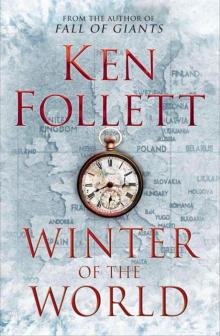 Winter of the World (Century Trilogy 2)
Winter of the World (Century Trilogy 2)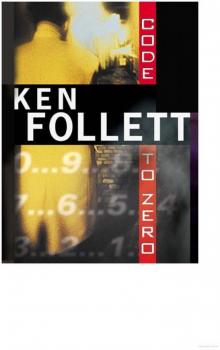 Code to Zero (2000)
Code to Zero (2000)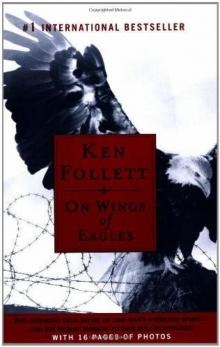 On Wings Of Eagles (1990)
On Wings Of Eagles (1990)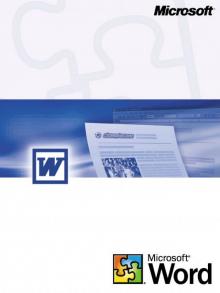 Storm Island
Storm Island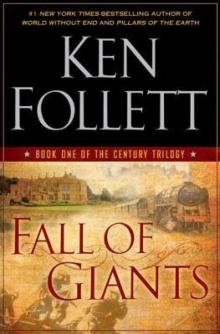 Fall of Giants (The Century Trilogy)
Fall of Giants (The Century Trilogy)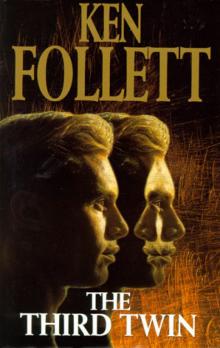 the Third Twin (1996)
the Third Twin (1996)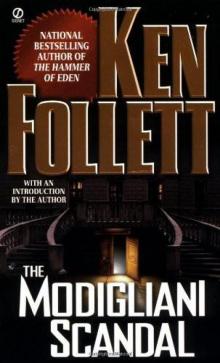 The Modigliani Scandal (1976)
The Modigliani Scandal (1976)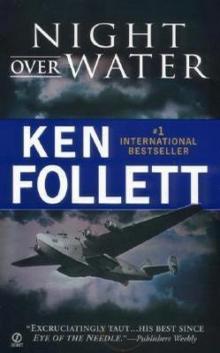 Night Over Water
Night Over Water